In yet another pathetically obvious attempt to get Warner Bros.’ Archive Collection to send us review titles sans moola, we here at the Movies & Drinks offices have sobered up just enough to review one of their classic Blu-ray thriller releases, Wait Until Dark…because that’s the only kind of thriller the Archive releases: classic (we’ll basically write anything for free stuff…).
By Paul Mavis
The Warner Bros. suspense thriller, Wait Until Dark, based on Frederick Knott’s successful Broadway play, directed for the screen by Terence Young, lensed by Charles Lang, scored by Henry Mancini, and starring Audrey Hepburn, Alan Arkin, Richard Crenna, Efrem Zimbalist, Jr., Jack Weston, Samantha Jones, and Julie Herrod, was a big popular and critical hit for Warners and star Hepburn, when released in the fall of 1967. Seen today, after countless cinematic imitations, Wait Until Dark just gets better and better with age, remaining one of best “pure” suspense movies ever made, thanks to its two intense lead performances, its flat-out brilliant, unsettling score, claustrophobic, evocative lensing, and its unrelentingly tense direction.
Click to purchase Wait Until Dark on Blu-ray at Amazon.
Your purchase helps pay the bills at this website!
“World’s champion blind lady” Susy Hendrix (Audrey Hepburn) is still coming to grips with losing her sight a year ago in an automobile accident. Her husband, photographer Sam Hendrix (Efrem Zimbalist, Jr.), pushes her hard to gain independence; for instance, if she drops something, he makes her paw around for it herself. However, there are still things she needs help with, such as buying groceries, a chore aided by 14-year-old upstairs neighbor Gloria (Julie Herrod), a neglected, attention-starved young girl whose emotional immaturity is manifest at times in petty cruelty towards Suzy (throwing things around the apartment like sharp knives…and making Suzy paw around for them like Sam).

So when Sam is unwittingly called out to Ashbury Park for a non-existent photo shoot, Suzy has no idea that she will soon be menaced that night in her Greenwich Village cellar apartment by three dangerous criminals—all of them looking for a doll stuffed with heroin. You see, a few days before, Sam met attractive Lisa (Samantha Jones) on a plane out of Montreal. Leaving the NYC airport, Lisa unexpectedly spotted fellow drug dealer—and psychotic murderer—Roat (Alan Arkin). Quickly making an innocuous excuse, Lisa pressed the doll on Sam as he was exiting the airport, promising to retrieve the doll from him later.
RELATED | More 1960s film reviews

Now Roat has tracked down Sam’s apartment, snuffed out double-dealing Lisa, and awaits the arrival of Lisa’s former con men partners, Mike Talman (Richard Crenna) and Carlino (Jack Weston). What follows is a complicated game of tricks, play-acting, intimidation, and finally murderous violence, all aimed at Suzy giving up a doll she can not find…until she does find it, and decides to fight for her life.
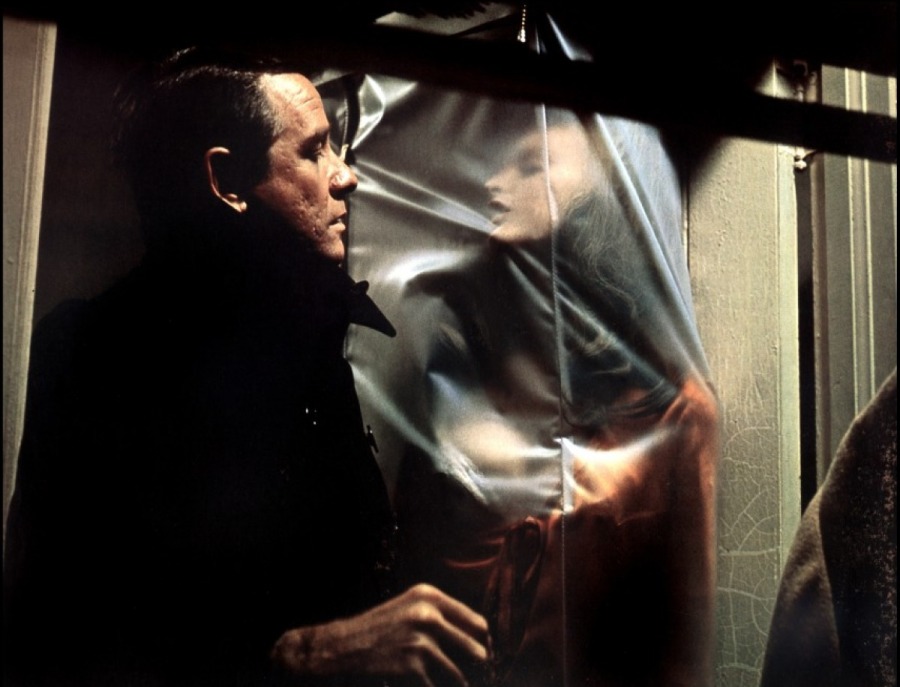
A staple on 1970s late late TV shows and afternoon movie programs, Wait Until Dark was always a solid go-to movie to watch on television. Unlike so many widescreen efforts that were panned-and-scanned on regular television back then, Wait Until Dark’s tight, claustrophobic visuals weren’t too mangled by the those square little TV box frames, while its expertly-built suspense was strong enough not to be hampered by constant commercial interruptions.
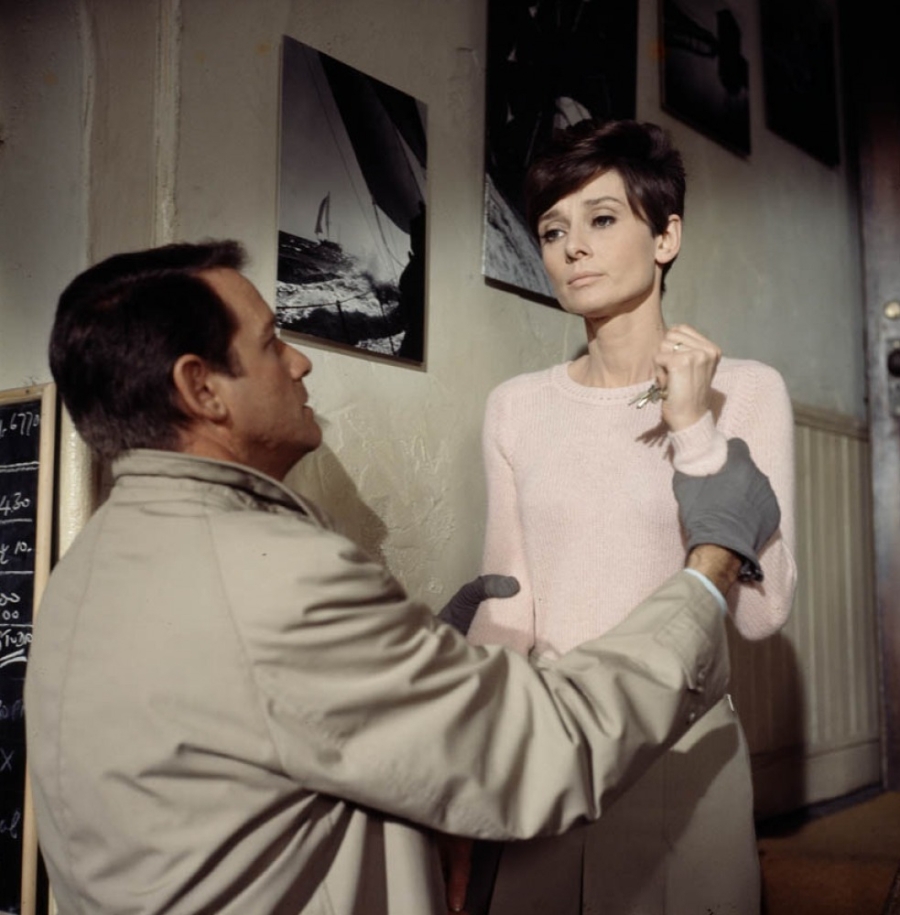
If Wait Until Dark worked so well under those television-imposed limits, imagine how movie audiences responded to it, particularly the ones lucky enough to catch Wait Until Dark in theaters that went along with Warners’ suggested gimmick of having all theater lights turned off during Arkin’s and Hepburn’s final pitch-black confrontation (can you imagine the lawsuits for that today?). I’ve seen Wait Until Dark countless times (it’s a perfect summer thriller), and I know where all the scares are coming…but every single time—including this Blu-ray viewing—it manages to pull me in, getting me tense like very few thrillers have ever done.

Warner Bros. studio head Jack Warner paid solid money for playwright Frederick Knott’s well-received 1966 Broadway play, so conventional wisdom demanded a bigger box office name than the play’s Lee Remick for the movie version’s blind heroine. Actually, Remick’s big-screen participation was never considered, since Hepburn’s husband, actor/producer Mel Ferrar, had purchased Knott’s play for Tony-winning Hepburn’s return to Broadway. She refused that request, but was finally (grudgingly) acquiesced to starring in the screen version.

Casting difficulties soon arose in finding the villain Roat (little known to movie audiences Robert Duvall, who starred opposite Remick, was not considered) First approached was George C. Scott, who declined, and then Rod Steiger, who also passed. Press reports also mentioned Sean Connery, but that sounds like some publicist’s wishful thinking (no way in 1966 was James Bond taking second billing to anyone, even Hepburn). Up-and-comer Alan Arkin, who had just scored an unexpected Best Actor Oscar nomination for his big screen debut in the hit comedy, The Russians Are Coming! The Russians Are Coming!, was finally selected.

According to sources including Zimbalist, Jr., Hepburn, Arkin and others, Wait Until Dark wasn’t exactly a happy shoot. Warners allowed Hepburn’s husband, minor film actor Mel Ferrer, to produce the movie version (no doubt to keep the A-list Audrey happy). However, the Hepburns were going through the final bitter throes of their 13-year marriage, and the daily on-set run-ins put a strain on the actress that is clearly visible in the footage (she had never been thinner on screen, with her face unmistakably drawn and tense). Arkin, initially wary of the company because he felt they didn’t “get” where he was going with the Roat character, soon found out why nobody else in Hollywood wanted his role: it was torture for him to torture Audrey Hepburn, whom Arkin discovered was an incredibly kind, generous model of ladylike professionalism.

If Wait Until Dark were made today, no doubt the scripters would change it to make the Suzy character somehow culpable in her torture, or at the very least have Sam be guilty of something (sleeping with Lisa, perhaps?), a moral failing that triggers the assault on Suzy. But in 1967, it was still possible to have a movie heroine who was “straight” (particularly if it was Audrey Hepburn). Indeed, the “clean” morality makes her terror all the more palpable—call it “no fault” brutalization—and all the more egregious an assault to the audience (who the hell cares what happens to people in the movies today? If Hollywood is correct and all morality is relative and equivalent…the concept of “heroes” and “villains” can’t really exist, can it?).
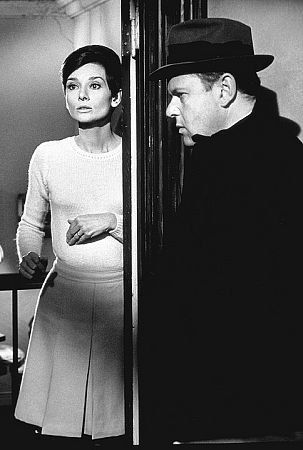
Of course Wait Until Dark’s great dramatic hook is Suzy’s blindness, not only structuring Suzy’s rollercoaster vulnerability/capability (she can’t find a spoon…then, she’s telling murderous Roat what to do), but also cueing our own involvement in the character’s plight (when the screen goes pitch black, we finally feel how frightened we would be, too, stuck in an inky black room with a killer bent on stabbing us to death). There had been other popular suspensers featuring women with disabilities battling psychotic killers—mute Dorothy McGuire in The Spiral Staircase, or paralyzed Barbara Stanwyck in Sorry, Wrong Number—but none had put the audience so squarely in the terrifying p.o.v. (so to speak) of the victim, as did Wait Until Dark.
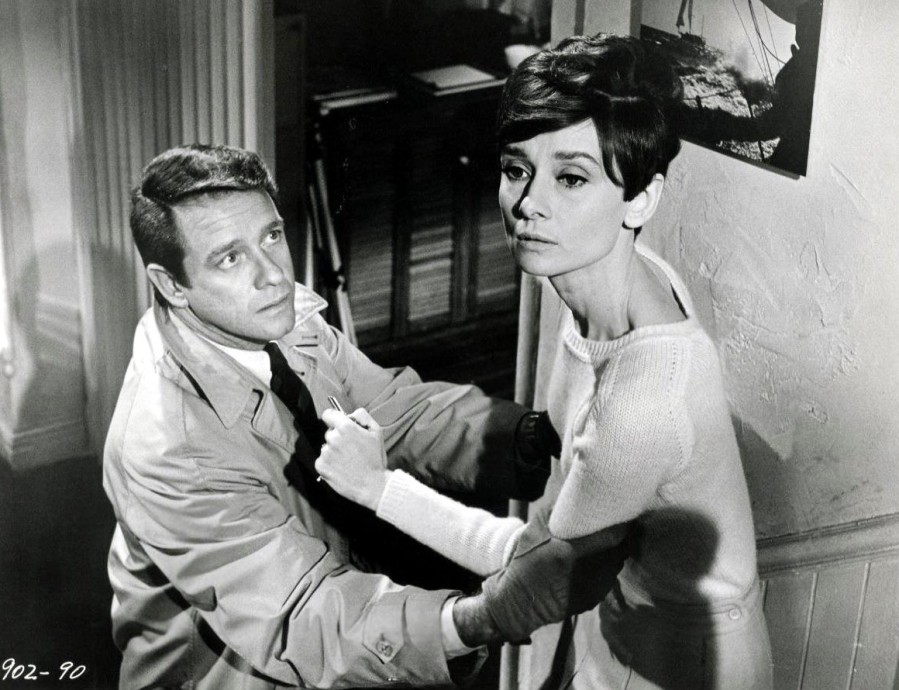
Wait Until Dark has its script problems…but they’re minor (Hitchcock did a better job of more thoroughly tying up all the exposition loose ends of Frederick Knott’s other classic, convoluted thriller play, Dial “M” For Murder). No matter how many times I see Wait Until Dark, there are still story points that have me scratching my head for a few minutes…such as Lisa apparently (?) waiting for her former conmen partners to get out of prison in order to double cross Roat’s dope smuggling (or…no?). Or…how did Lisa locate Mike in New York? I find the movie’s time line a bit confusing, too; we can’t seem to figure out how much time has passed since Sam returned with the doll (it has to be days, since Roat needed to observe when Lisa is out of the apartment…but it plays on the screen like only that afternoon). And Roat got all the info on Mike and Carlino by…torturing Lisa (we assume?).
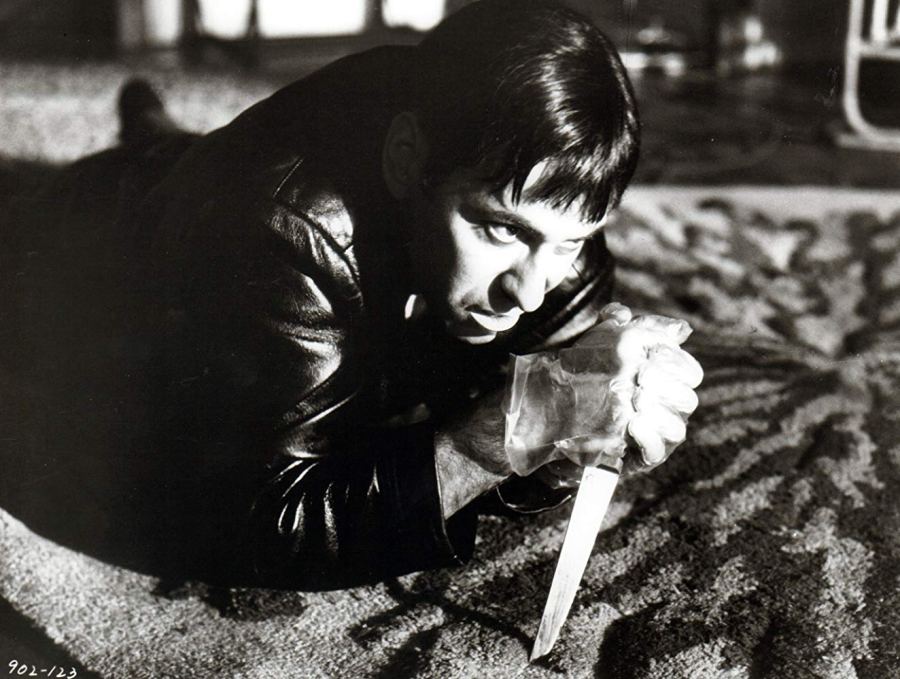
Director Terence Young, a nice stylist if nothing else, with movies like Dr. No and Thunderball, could also be messy as hell (The Klansman, The Jigsaw Man). But he does his best work in Wait Until Dark. Greatly aided (perhaps) in camera placement by Hepburn’s favorite cinematographer, Charles Lang, almost every frame and sequence creates some kind of visual or narrative tension, from something as simple as the somehow menacing shot of little Gloria’s boots as she torments Suzy, to decidedly creepy ones like Roat silhouetted in a dark doorway, or Mike knifed in the back, to flat-out frightening shots…such as the entire finale (brilliantly, brilliantly deepened by composer Henry Mancini’s menacing score—which, incomprehensibly, wasn’t nominated for an Oscar…but don’t blame the lovely Doctor Dolittle for that oversight). We don’t even get a let-up from the tension after the harrowing finale, when idiot Mike (a remarkably unsympathetic turn from Zimbalist, Jr.) refuses to rush over and comfort his wife after her horrific experience.

It’s difficult to say if Warner Bros. and Young deliberately miscast the two “comic book minds” criminals Mike and Carlino…because you never believe that funny fat boy Weston and clean-cut, straight arrow Crenna really ran a badger game with model Jones, or that they’re actually killers, as Roat claims. Maybe “funny” and “nice” were picked to more contrast Arkin’s truly sick playfulness, and then full-on villainy.

Weston does provide some comic relief, while Crenna keeps making us think he’ll switch over to Hepburn’s side…until the script actually has him do that, almost blowing the whole story in the process (that’s Wait Until Dark’s biggest plot hole: if we’re to believe Crenna was really a killer, he wouldn’t congratulate Hepburn’s stiff upper lip pluck and go off on his merry way, thinking Roat dead. He’d kill her, too, and take the drugs himself). Arkin’s crafty, funny, perverse, terrifying killer, on the other hand, basically invents the template for modern movie psychos. Sweating and popping pills while joking and sniffing Hepburn’s lingerie (I’ll bet The Nun’s Story crowd loved that), Arkin’s Roat may not seem so groundbreaking today…but that’s only because so many other subsequent actors have built off his innovative, startling turn (even our favorite hack here at M&D, worthless Quentin Tarantino, tried to ape Arkin’s performance, in a 1998 Broadway turn that was rightly laughed off the stage).

As for Hepburn, 1967 could have been just the beginning of a deepening of her movie career. Earlier in the year, she had delivered a remarkably adept turn—swinging her character from young and delightful to sad and brittle—in the decidedly modern Stanley Donen masterpiece, Two for the Road. If that outing didn’t spell a smash at the box office, Wait Until Dark did, along with critical kudos and a Best Actress Oscar nom. Unfortunately, 1967 proved to be the end of her A-list days: she didn’t make another movie for ten years, and when she did come back in 1976 (the slight fizzle, Robin and Marion)…audiences had moved on.
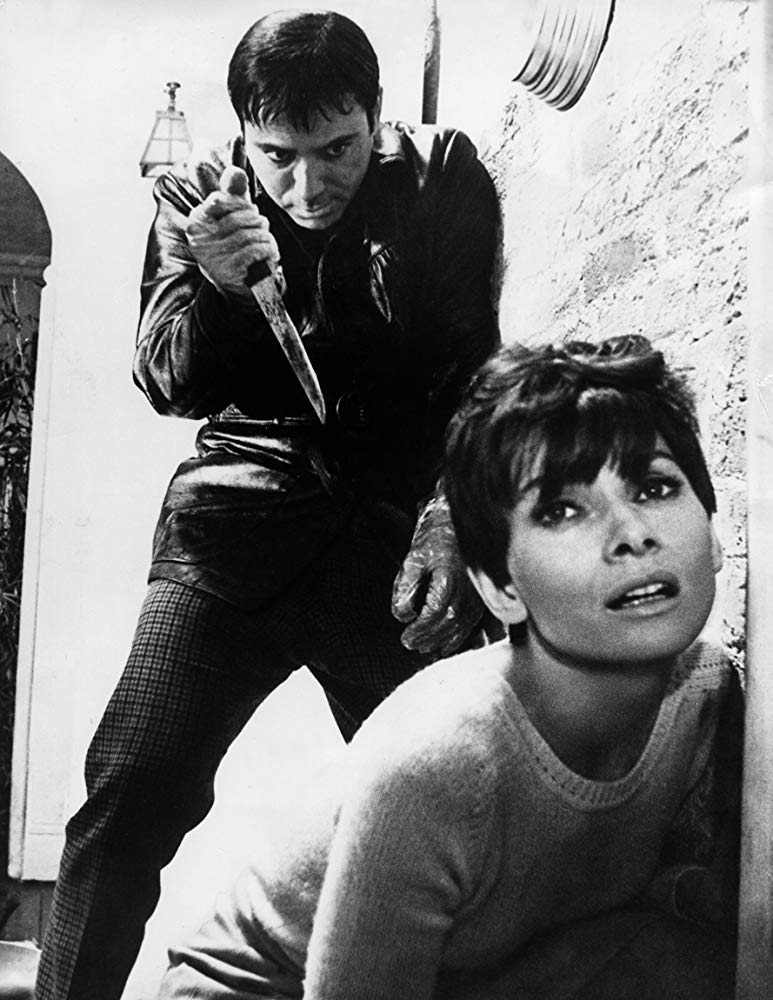
Hepburn would never in a million years be categorized as a “scream queen”…but I can’t think of another actress in a horror movie who projects realistic, palpable, stark terror, as well as Hepburn does in Wait Until Dark (unlike so many other actresses in these kinds of outings, Hepburn’s screams and cries and whimperings sound absolutely genuine). Vulnerable and fearful of losing her husband because of her blindness; loving and kind to little Gloria even though the girl has cruelly teased her; hopeful and then betrayed when she learns “good guy” Mike is one of her tormentors, and then alternately brave and smart—and believably scared and screaming, as Roat closes in for the kill—no actress in 1967 gave as layered, as difficult a performance as Hepburn did in Wait Until Dark (it’s also one of the most believable sighted “blind” performances in movies). She should have won the Oscar. Hers and Arkin’s are two of the most memorable turns in any suspense thriller, in one of that genre’s best efforts.

PAUL MAVIS IS AN INTERNATIONALLY PUBLISHED MOVIE AND TELEVISION HISTORIAN, A MEMBER OF THE ONLINE FILM CRITICS SOCIETY, AND THE AUTHOR OF THE ESPIONAGE FILMOGRAPHY. Click to order.


I saw Wait Until Dark in New York with Lee Remick in the lead. The production was fine, and Lee, more than attractive.
LikeLiked by 2 people
Not anonymous, me — Barry
LikeLiked by 1 person
Love this movie too– it’s actually a top-five favorite! I’ve seen it several times and yet it remains so eerie and entertaining. One of Audrey’s best performances for sure and it was the film that made me a huge fan of Alan Arkin, who’s brilliant in just about everything he’s ever done.
I will say I don’t entirely agree with some of your criticisms of the script. For example, I don’t think Lisa was waiting for Mike and Carlino to get out of jail to steal the heroin, since there is nothing to suggest she planned on having them in on it to begin with; it seemed like she was a sort of serial-traitor, screwing over those two during their early cons and then screwing over Roat once they were smuggling partners. Dragging them into it might have been a last-ditch effort to scrounge up some other “players” for the con.
It’s also pretty safe to assume Roat tortured the information out of her before killing her, which I don’t think is too much of a leap given his behavior. However, I do agree the timeline is unclear. The play explicitly makes it out to be a matter of a few days from what I recall (the first scene in the apartment takes place Thursday afternoon and then the beginning of the con takes place Friday afternoon, or so the stage directions say), but the movie doesn’t. Also, yeah, I have no clue how Roat tracked down Mike and Carlino in such a limited amount of time, especially if they just got out of jail.
And yet, I find these things don’t matter too much, really. I’ve forgiven bigger slights in lesser movies and this really is one of the best-crafted, most suspenseful movies I’ve ever seen. I’d even put it over DIAL M FOR MURDER, which though more tightly woven as far as all loose ends go, has far less interesting characters.
LikeLiked by 1 person
Did susy regain her sight at the end of the film?
LikeLike